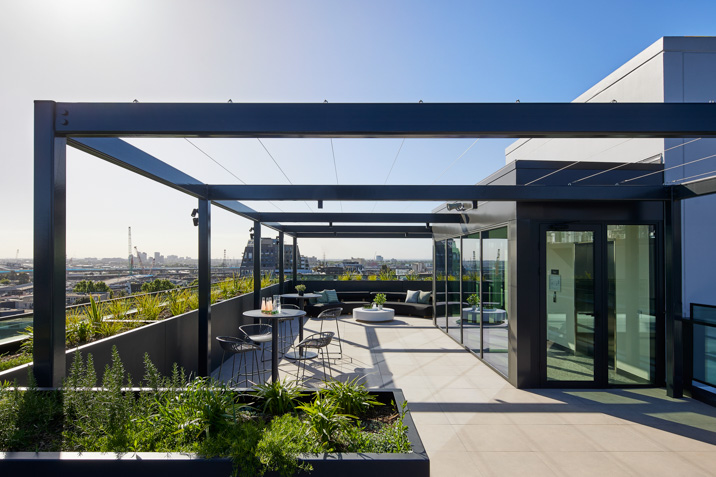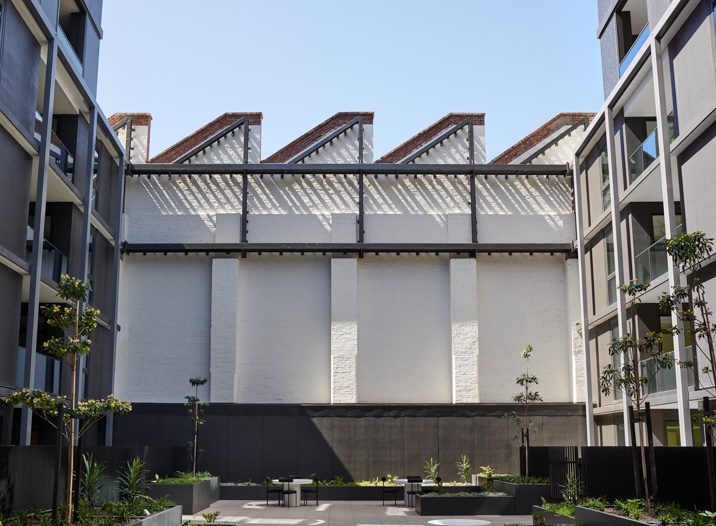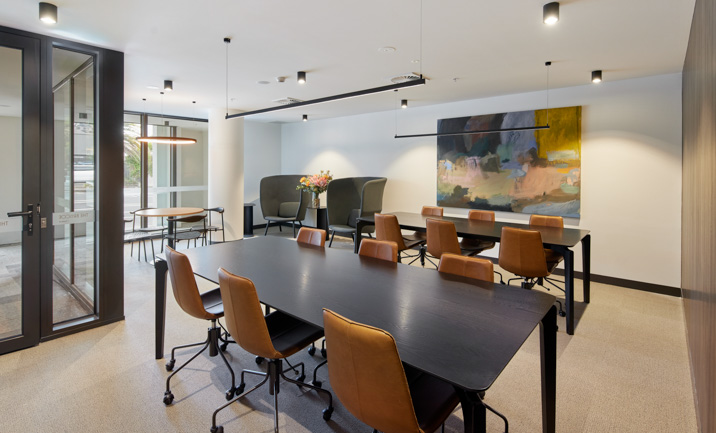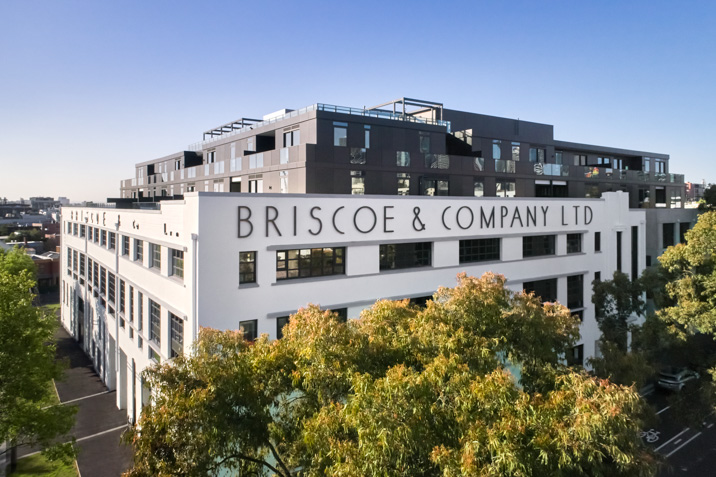While build-to-rent remains in its primitive stage within the Australian built environment, the concept is not unfamiliar to Rothelowman. In fact, the practice's understanding of the housing model is quite the opposite.
The national outfit boasts an outstanding portfolio of build-to-rent projects dotted along the continent. Their latest offering, The Briscoe, sees an industrious West Melbourne warehouse converted into an authentic, layered multi-residential complex that seeks to question the typical conventions of Australian living.
Rothelowman sees the BTR model as an opportunity. Not only will it provide much-needed housing stock in a time of crisis, but it will certainly improve the quality of medium and high density housing. Amenity and high-end design are implied traits of the build-to-rent model. To attract tenants there is a strong emphasis on sophistication. The Briscoe is a primary example of said sophistication.

On build-to-rent itself, Rothelowman’s National Design Principal Jonothan Cowle believes that in an evolving society, new ideas must come to the fore in regards to how we live.
“Australian cities now, society has evolved. We're a very international and sophisticated culture. We're actually a lot more complex than we were, I guess in that post-war idea of the Australian dream,” he says.
"I think people who live in build-to-rent developments have a unique opportunity to take pride in their homes. Creating an environment where residents feel proud to invite guests and socialise is crucial, even in apartment buildings. The build-to-rent model prioritises the user's experience, suggesting that the Australian dream may be more about having a place where one can belong rather than just owning a home."
“Build-to-rent amplifies the dignity of the resident. It actually makes living an important philosophy because if the living condition is poor, then no one rents it. There's choice in the system now. The (BTR) system incentivises a better product, outcome, and service to the occupant, allowing them to ultimately have security, live in a way that they can look after their family, entertain their friends, and have a place they can call home.”
The Briscoe is conveniently located. Holding vignettes of the bay, river and CBD, Cowle regards it as a “beautiful and interesting place to live, offering great amenities and services.”

Each apartment features a visually and spatially dynamic interior. Three main elevations of the warehouse were maintained, while an additional elevation was added to complete the building’s form. The building’s deep facade and intricate floorplate has given Rothelowman the ability to create outside thresholds and inside courtyards, akin to a Roman Villa.
“One of the really interesting and important things about creating homes in general is authenticity. We want our cities to be authentic, our living experience to be authentic, and our open environments to be authentic,” Cowle continues.
“Part of that authenticity is keeping stories alive, the continuity of history. Converting the Briscoe factory warehouse into housing was an amazing opportunity. From an architectural perspective, we get to create this very interesting layered courtyard plan. The skin between the facade of the beautiful warehouse and the new apartments is this double-layered environment.”
One of Rothelowman’s core philosophies of repairing the street has seen the locale rejuvenated by The Briscoe. Cowle says that the practice holds a certain responsibility to enhance the integrity of a streetscape. Despite new elements being integrated within the building’s form, these have been layered to maintain harmony with the heritage atmosphere of West Melbourne.
"Even though the original project was an industrial building, it was also humanist in its scale, interventions, markings, and layers. We retained this while also introducing new elements such as balconies, terraces and gates, transforming the structure from its original form into the multi-residential complex."

Rothelowman has aimed to create strong, robust, elegant and modern interiors that acknowledge the building’s industrial and Art Deco heritage. The sense of locality is intentional, and was a non-negotiable from the developer, Sentinel, an international BTR developer, who aims to create distinctly individual precincts that put the occupant experience at priority one.
“The driver behind all decisions made was to make people feel that they belonged to West Melbourne, to this particular street, and that they felt and were celebrated as locals,” Cowle says.
“The ‘magic sauce’ for any successful build-to-rent is to make it local. When you think about where the build-to-rent market will go and what it will offer, essentially it's offering choice. If you want to attract someone who will pay the money and commit to long-term tenancy, what are you offering them?

“The idea of feeling authentically part of their place and their home is key. That was one of the strong messages from Sentinel and their choice to take on this complicated heritage renewal. It was part of that agenda and has been very successful because of it. It's been influential as an attitude to all of our work, tying to our philosophy of repairing the street and generous eye for life, and being local. The care and attention have been really interesting and a good part of the project.”
When asked what he and his team are most proud of, Cowle talks of the creation of the warehouse’s second life, the ability to create a truly authentic living experience, and to have enhanced Rothelowman’s BTR portfolio once more, while refining its processes for future projects.
“We've been able to represent this building in a way that shows what was once a warehouse is now a beautiful facade,” he says.
“We are proud to create new homes that people can be proud of, that look beautiful, and are part of a new story and narrative for the future. We hope to inspire others to follow this example in Melbourne.”

For more information on The Briscoe, click here.

